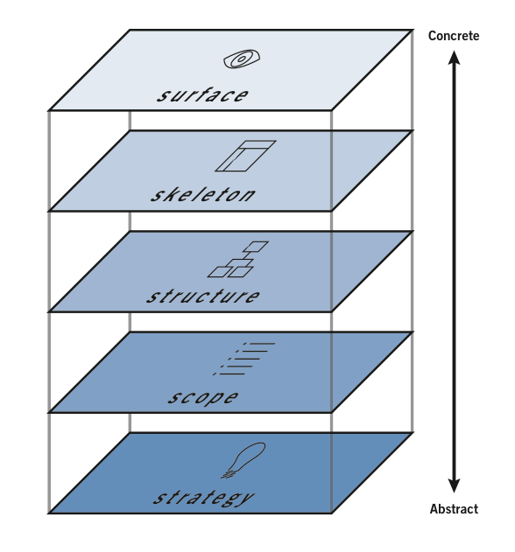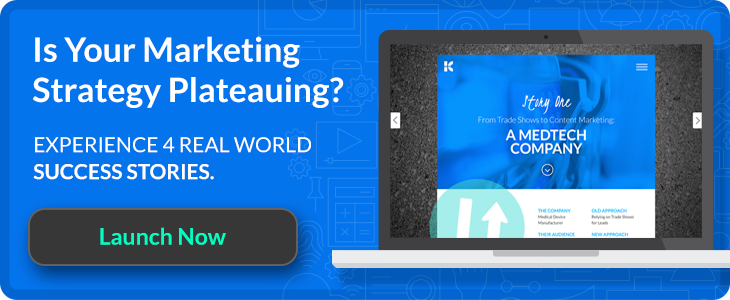
UX Principles to Apply to Your Inbound Marketing

In some ways, a successful inbound marketing program boils down to understanding, planning, executing and optimizing: You need an acute understanding of your audience; a concrete plan for how to attract them with relevant, useful content; and holistic processes for continually managing and improving the entire buyer’s journey, from end to end.
It just so happens the tenets of inbound marketing overlap substantially with the core principles of effective user experience design. UX design is all about creating experiences that are optimally relevant, useful and enjoyable for real people. Let’s take a closer look at some key UX design principles that can help you become a more savvy inbound marketer.
Build From the Bottom to the Top
In “The Elements of User Experience,” Jesse James Garrett explains each of the five planes of experience design: strategy, scope, structure, skeleton and surface. He says the key is to build from bottom to top—strategy to surface—which applies as aptly to developing a website or app as it does to executing an inbound marketing program.
Too often in the content development process, marketers allow issues of format and design to dictate tactics and content. In the mad rush to start generating leads, it’s easy to jump ahead to the offer itself, as in, “We need to write an eBook.” In Garrett’s UX design model, this approach is akin to starting from the structure or skeleton plane instead of beginning at step one—strategy.
There’s no reason to think an eBook will be a successful tactic to meet your marketing goals unless you’ve taken the time to determine what exactly you’re trying to accomplish, who you’re trying to reach, what content they need at a particular phase of their buying journey and which content format is best suited to meet their needs.
Rather than starting with “We need to write an eBook,” start with your business objectives, your user needs and a strategy for bridging them.

Source: Columbia Center for New Media Teaching and Learning
Prioritize the User In Everything You Do
UX design differs from web design in that questions of technology are set aside to focus exclusively on user needs. Technology becomes a tool to help users accomplish their goals. “Not only do you want to know who they are, but you want to dive deeper into understanding their motivations, mentality and behavior,” writes Grace Ng for Hack Design.
User research, persona development, usability testing and measures of user satisfaction are pillars of UX design. The field draws on psychology, anthropology and sociology to get inside people’s heads and try to understand their goals and motivations. If this sounds familiar to the marketers out there, it’s because these pillars also infuse all areas of modern marketing, especially inbound, which emphasizes offering content that helps people solve their problems rather than interrupting them with brand-centric sales messages.
Becoming a successful inbound marketer requires you to tap into your empathy and try to experience your brand’s interactions from other perspectives. Conduct robust user research to anticipate the resources your potential buyer needs at each step of the buyer’s journey, and continually remind yourself that your reader isn’t necessarily like you.
Bear in mind the “curse of knowledge,” a cognitive bias that makes it harder for subject matter experts to explain their subjects to non-experts in understandable language. You can’t unlearn what you’ve learned, but you can have non-experts review your content before publication to check for comprehension.
Simplify and Streamline
UX and UI designers edit relentlessly to clarify, simplify and streamline the digital experiences they create. By honing clear paths of interaction and removing distractions and barriers to understanding, they help optimize their websites, applications or products for maximum usability.
“Simple is not your starting point, it’s the end result of a long perfection process,” writes Daria Shualy for VentureBeat. “You reach perfection by building, measuring, improving or removing.”
Similarly, your inbound marketing promotions and content must be rigorously focused, edited and streamlined. Strengthen your content by focusing on one compelling idea per content offer, whether it’s a blog post, eBook, infographic, video or promotional campaign. Map out your content distribution processes, identifying potential barriers and distractions at every touch point, from social channel to email inbox to landing page, and so on. Remove as much friction as possible as you strive to build a seamless journey across devices and platforms.
Adopt a Testing Mentality
On the journey to simplicity, testing is the compass that guides your decision-making. UX designers rely on a/b and multivariate testing, user focus groups, interviews and surveys to assess the usability and utility of a UX.
Your inbound marketing strategy, like your user interfaces, should be alive and constantly evolving as you acquire data about what’s working and what isn’t. To achieve your inbound objectives, adopt a mindset of experimentation—don’t “set it and forget it.”
Here are just some of the things you can test and tweak as you work to identify what converts:
- Landing page layouts, imagery, colors and calls-to-action
- Content formats, styles, lengths and levels of technical expertise
- Promotional channels, frequency, times and days, geotargeting and messaging
Evoke Emotion and Deliver Delight
“Emotion is what makes an experience an experience,” writes design strategist Amanda O’Grady. “Emotional reactions create bonds between users and products, signifying that they are experiencing something memorable.”
UX designers use colors, imagery, gamification and playful microinteractions to make users feel things. You want your inbound marketing to do the same. Tell powerful stories with long-form content. Make people laugh with your blog and social posts. Build urgency and excitement with the timing and content of your email campaigns.
“Products fail when they don’t adequately create user habits,” writes UX expert Nir Eyal. “And if a product doesn’t create a habit, then it’ll get left behind in the ever increasing distractions we all face.”
If you can reach the point where your blog posts, eBooks, email campaigns or YouTube videos are ingrained in customers’ minds as a habitual resource for education or entertainment, your inbound marketing program is a resounding success.




